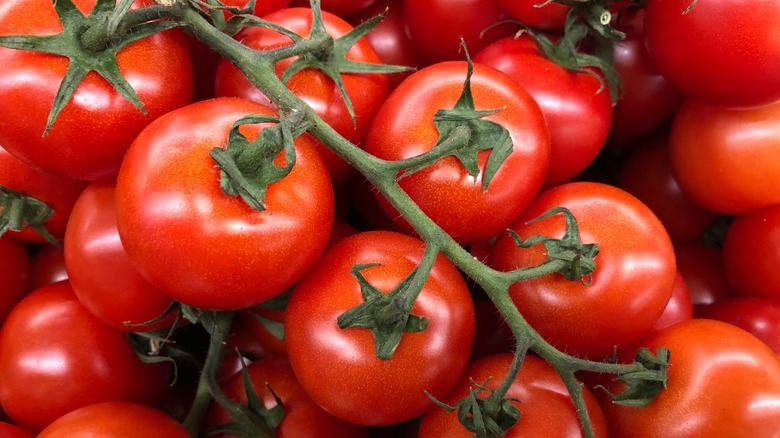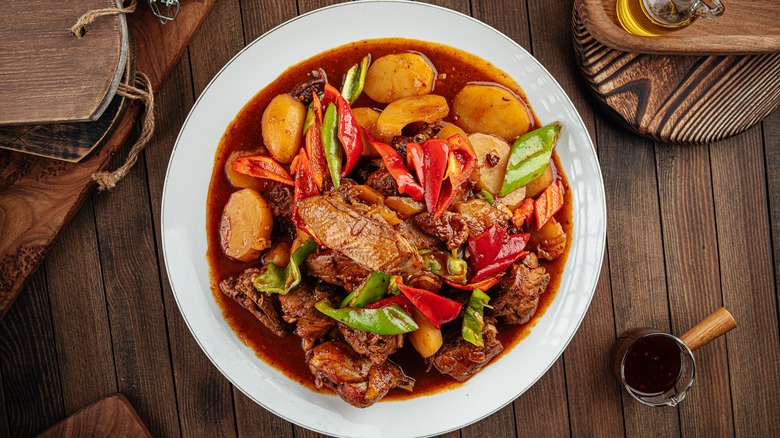This Country Produces The Most Tomatoes Worldwide
The tomato, a staple in Italian and American cuisine, originated in the Andes, a mountain range extending through the length of South America in what we recognize today as Chile, Columbia, Ecuador, and Peru.
The fruit we all like to pretend is a vegetable was once greatly feared by the world. Tomatoes are technically a part of the nightshade family, as are a plethora of delicious peppers, potatoes, eggplants, and even tobacco. Today, nightshade gets a bad rap in fantasy novels and historical television series because writers love to use the plants' poisonous leaves, berries, and flowers as a plot point, but that doesn't mean that some parts of nightshade plants aren't edible. Now, we know tomato fruits themselves are not toxic, but the stems, leaves, and flowers are (via SeedChange).
Despite the general population's deep-seated aversion to it at first, the tomato became a world traveler, settling in places like India, Turkey, Italy, Egypt, and China. As a result, the tomato is now a huge part of Western cuisine: We put it on pizza, in pasta, sauces, and salads, use it as a salsa, garnish, and even eat it like candy out of a bowl. The fruit has become so popular today that we no longer blink when we hear that our meals involve tomatoes. But people might be surprised to find out that despite Western countries being the number one consumers of tomatoes, they are not the biggest producers.
Tomatoes in the East
Today, China is number one in tomato production, growing 34.72% of all the words tomatoes (via Numerical). According to Scholar Blogs, the fruit arrived in China between the 16th and 17th centuries during the Ming Dynasty. Still, tomatoes were heavily considered Western, so they were not absorbed into Chinese cuisine until 1940, during World War II, when stir-fried tomatoes and scrambled eggs (xihongshi chao jidan) became popular. Tomatoes are now used in some noodle dishes and stews but are more popular in China's colder, Russian-bordering areas.
One of China's northern provinces, Xinjiang, produces 70% of the country's tomatoes in government-funded greenhouses, per Blue Book Services. The Uyghur Muslims who live predominantly in Xinjiang have a dish called dapanji, which is a tomato stew with a variety of hardy vegetables mixed in.
Thanks to China's innumerable greenhouses, the province can farm tomatoes year-round (via Peverelli on Chinese food and culture). So, next time you pick up a jar of marinara sauce, sun-dried tomatoes, or even tomato paste, chances are those delicacies were farmed in China, and consider how far that fruit had to travel to make it into your hands and on to your plate.

